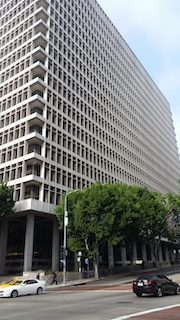On January 1, 2022, Assembly Bill (AB) 333 becomes effective, raising the proof required for a gang enhancement to apply under Penal Code § 186.22.
As the reader of this article may already be aware, Penal Code § 186.22 provides for enhanced punishment when a person is convicted of an enumerated felony “for the benefit of, at the direction of, or in association with any criminal street gang, with the specific intent to promote, further, or assist in any criminal conduct by gang members.” Penal Code § 186.22(b)(1).
Brief Synopsis: In several significant ways, Assembly Bill 333 changes Penal Code § 186.22, which sets forth the legal requirements for finding a defendant committed a crime to benefit, promote or assist a criminal street gang. This article describes and explains the significance of such changes.
Over the years, juries and judges have found defendants to be gang members who really were not, often because defendant simply had a few tattoos and a so-called “gang expert” testified that defendant fit the profile of a gang member. We have spoken with many parents and siblings of defendants who have told us their loved one was found to be a gang member when he or she certainly never was and is currently serving an enhanced sentence due to this mistake.
Prior to enactment of AB 333, a criminal street gang was defined quite broadly as “any ongoing organization, association or group of three or more persons, whether formal or informal, having as one of its primary activities the commission of one or more enumerated acts, having a common name or common identifying sign or symbol, and whose members individually or collectively engage in, or have engaged in, a pattern of criminal gang activity.”
Effective January 1, 2022, AB 333 narrows the definition of “criminal street gang” to “an ongoing, organized association or group of three or more persons, whether formal or informal, having one of its primary activities the commission of one or more enumerated criminal acts, having a common name or common identifying sign or symbol, and whose members collectively engage in, or have engaged in, a pattern of criminal gang activity.”
 Clara Shortridge Foltz Criminal Courts Building CCB Los Angeles
Clara Shortridge Foltz Criminal Courts Building CCB Los Angeles
The enumerated criminal acts include, but are not limited to, assault with a deadly weapon, robbery, carjacking, murder, attempted murder, vandalism and battery.
Assembly Bill 333 also notably requires a “collective, not merely individual, engagement in a pattern of criminal gang activity.” Assembly Bill 333 redefines “pattern of criminal activity” to require that the last of the predicate offenses “occurred within three years of the prior offense and within three years of the date the current offense is alleged to have been committed” and that the predicate offenses “were committed on separate occasions or by two or more members, the offenses commonly benefitted a criminal street gang and the benefit was more than reputational.”
“Examples of a common benefit that are more than reputational may include, but are not limited to, financial gain or motivation, retaliation, targeting a perceived or actual gang rival, or intimidation or silencing of a potential , current or previous witness or informant.” AB 333, § 3, amended § 186.22(g).
In other words, Assembly Bill 333 adds four additional requirements to proving a gang enhancement:
- The offense must have “commonly benefitted a criminal street gang” where the benefit is more than reputational;”
- The last predicate offense must have occurred within three years of the date of the currently charged offense;
- The predicate offenses must have been committed on separate occasions or by two or more gang members, or by two or more gang members, as opposed to persons; and
- The charged offense cannot be used as a predicate offense.
These additional requirements are often not found by a jury, so if AB 333 applies to a case in resentencing because the CDCR or the DA recommends recall and resentencing (or the sentence is not yet final), then a judge will look to the special verdict for such finding, which may not exist.
Otherwise, it is important to note that AB 333 is not retroactive to cases wherein the judgment or sentence is final because the time to appeal has expired. In re Estrada (1965) 63 Cal.2d 740, 744-746; People v. Superior Court (Lara) (2018) 4 Cal. 5th 299, 307-308.
However, when it does apply and the sentence involves a conviction under Penal Code § 190.2(a)(22) (gang murder special circumstance) and Penal Code § 12022.53(d) (consecutive sentence enhancement of 25 years to life when defendant “personally and intentionally discharges a firearm and proximately causes great bodily injury . . . or death” during the commission of an offense), such a conviction and sentence enhancement may be void as well.
For more information about the sentencing enhancement for a defendant who commits a crime while a gang member to promote, assist or further the goals of a gang, please click on the following articles:
 Clara Shortridge Foltz Criminal Courts Building CCB Los Angeles
Clara Shortridge Foltz Criminal Courts Building CCB Los Angeles